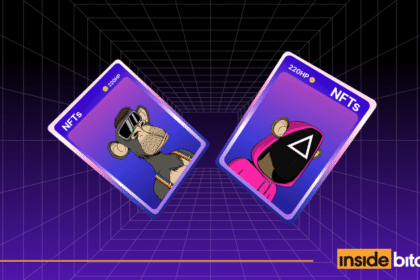Smart contracts have rapidly gained traction as a core component of blockchain-based solutions, offering businesses a way to automate agreements, streamline processes, and create transparent, trustless transactions. As organizations explore the potential of blockchain, understanding how to build and deploy smart contracts on Ethereum becomes essential for those seeking efficiency, security, and innovation in their operations.
In this blog, we will walk you through the complete process of developing and deploying Ethereum smart contracts, highlighting key considerations, best practices, and the importance of working with a reputable Smart Contract Audit Company to minimize risks and maximize value.
A smart contract is a self-executing program stored on a blockchain that automatically enforces the terms of an agreement when predefined conditions are met. Unlike traditional contracts, which require manual intervention and are prone to disputes and delays, smart contracts execute instantly and impartially, reducing the need for intermediaries and minimizing operational risks.
Business Use Cases for Smart Contracts
- Supply Chain Management: Automate tracking, payments, and inventory updates.
- Insurance: Streamline claim processing and payouts.
- Real Estate: Simplify property transfers and escrow arrangements.
- Personal Identity: Securely manage digital identities and KYC processes
Ethereum is the most widely used blockchain for smart contract development due to its robust developer ecosystem, established standards, and support for complex decentralized applications (dApps). Ethereum smart contracts are typically written in Solidity, a contract-oriented programming language designed for the Ethereum Virtual Machine (EVM).
Before any code is written, clearly outline the objectives and requirements of your smart contract. Engage stakeholders to determine:
- The specific business logic to automate
- The parties involved and their roles
- The data and assets to be managed
- Security and compliance considerations
Building a secure smart contract requires a multidisciplinary team:
- Blockchain developers proficient in Solidity
- Security experts for code review and auditing
- Project managers and business analysts
- UI/UX designers (for dApp interfaces)
Several tools facilitate Ethereum smart contract development:
- Remix IDE: A browser-based IDE for writing, testing, and deploying smart contracts.
- Hardhat: A flexible development framework for compiling, testing, and deploying contracts.
- Truffle: Another popular development suite for Ethereum.
Install Node.js and npm, then set up your preferred framework. For example, with Hardhat:
You’ll need an Ethereum wallet (such as MetaMask) to interact with the blockchain. For testing, use a test network (Goerli, Sepolia, etc.) and obtain test Ether from a faucet.
Here’s a simple example of a Solidity contract:
This contract allows users to store and retrieve a number.
Testing is crucial to catch bugs and vulnerabilities before deployment. Use the testing tools provided by your framework (Hardhat, Truffle, or Remix) to write unit and integration tests. Run your tests on a local blockchain or a public testnet.
Security is paramount. Engage a reputable Smart Contract Audit Company to conduct a thorough review of your code. Audits typically involve:
- Automated testing for common vulnerabilities
- Manual code review for logic errors and security flaws
- Functional testing to ensure business logic is correctly implemented
- Detailed reporting and recommendations for remediation
Smart contract audits are essential because deployed contracts are immutable; any errors or vulnerabilities can result in significant financial and reputational losses.
Once your contract passes all tests and audits, you’re ready to deploy. Deployment involves sending your compiled contract bytecode to the Ethereum network. This can be done using:
- Remix IDE: Deploy directly from the browser.
- Hardhat/Truffle: Use scripts to automate deployment.
Example with Hardhat:
After deployment, save your contract address for future interactions.
You can interact with your contract using:
- Web interfaces (dApps) built with libraries like web3.js or ethers.js
- Command-line scripts
- Directly via wallets like MetaMask
Before any code is written, clearly outline the objectives and requirements of your smart contract. Engage stakeholders to determine:
- The specific business logic to automate
- The parties involved and their roles
- The data and assets to be managed
- Security and compliance considerations
Building a secure smart contract requires a multidisciplinary team:
- Blockchain developers proficient in Solidity
- Security experts for code review and auditing
- Project managers and business analysts
- UI/UX designers (for dApp interfaces)
Several tools facilitate Ethereum smart contract development:
- Remix IDE: A browser-based IDE for writing, testing, and deploying smart contracts.
- Hardhat: A flexible development framework for compiling, testing, and deploying contracts.
- Truffle: Another popular development suite for Ethereum.
Install Node.js and npm, then set up your preferred framework. For example, with Hardhat:
You’ll need an Ethereum wallet (such as MetaMask) to interact with the blockchain. For testing, use a test network (Goerli, Sepolia, etc.) and obtain test Ether from a faucet.
Here’s a simple example of a Solidity contract:
This contract allows users to store and retrieve a number.
Testing is crucial to catch bugs and vulnerabilities before deployment. Use the testing tools provided by your framework (Hardhat, Truffle, or Remix) to write unit and integration tests. Run your tests on a local blockchain or a public testnet.
Security is paramount. Engage a reputable Smart Contract Audit Company to conduct a thorough review of your code. Audits typically involve:
- Automated testing for common vulnerabilities
- Manual code review for logic errors and security flaws
- Functional testing to ensure business logic is correctly implemented
- Detailed reporting and recommendations for remediation
Smart contract audits are essential because deployed contracts are immutable; any errors or vulnerabilities can result in significant financial and reputational losses.
Once your contract passes all tests and audits, you’re ready to deploy. Deployment involves sending your compiled contract bytecode to the Ethereum network. This can be done using:
- Remix IDE: Deploy directly from the browser.
- Hardhat/Truffle: Use scripts to automate deployment.
Example with Hardhat:
After deployment, save your contract address for future interactions.
You can interact with your contract using:
- Web interfaces (dApps) built with libraries like web3.js or ethers.js
- Command-line scripts
- Directly via wallets like MetaMask
- Follow Coding Standards: Adhere to established Solidity patterns and security guidelines.
- Minimize Complexity: Simpler contracts are easier to audit and less prone to errors.
- Use OpenZeppelin Libraries: Leverage well-tested libraries for common contract patterns (ERC20, ERC721, etc.).
- Limit On-Chain Data: Store only essential data on-chain to reduce costs and improve efficiency.
- Regularly Update Dependencies: Keep your development tools and libraries up to date.
A smart contract audit is a comprehensive review of your contract’s code to identify vulnerabilities, inefficiencies, and compliance issues. Audits help prevent exploits, ensure regulatory compliance, and boost your reputation among users and partners.
Key Steps in the Audit Process
- Collect documentation and freeze the codebase
- Conduct automated and manual testing
- Classify and prioritize issues
- Provide detailed reports and remediation guidance
- Re-audit after fixes are applied
- Reentrancy Attacks: Malicious contracts repeatedly call functions before previous executions are complete.
- Integer Overflows/Underflows: Arithmetic errors leading to unexpected results.
- Front-running: Attackers exploit transaction ordering for profit.
- Denial of Service (DoS): Contracts are rendered unusable by malicious actors.
- Access Control Issues: Unauthorized users gain access to restricted functions.
Before deploying to the Ethereum mainnet, thoroughly test your contract on public testnets like Goerli or Sepolia. This allows you to:
- Validate contract functionality in a real blockchain environment
- Identify network-specific issues
- Gather feedback from stakeholders
Deploying on testnets is free and risk-free, as test Ether has no real value.
Once your contract is fully tested and audited, you can deploy to the mainnet. This step is irreversible, so double-check all parameters, addresses, and configurations. Monitor your contract post-deployment for unexpected behavior or interactions.
- Monitor Transactions: Use block explorers (like Etherscan) to track contract activity and detect anomalies.
- Plan for Upgrades: Immutable contracts cannot be changed, but upgradeability patterns (like proxy contracts) allow for future improvements.
- Community Feedback: Encourage users to report bugs and suggest enhancements.
While it’s possible to build simple contracts independently, most businesses benefit from partnering with experienced smart contract development companies. These firms bring:
- Deep expertise in blockchain architecture and security
- Access to advanced development and auditing tools
- Proven track record in delivering production-ready solutions
- Ongoing support for upgrades, compliance, and integration
Building and deploying smart contracts on Ethereum opens up new possibilities for automating business processes, reducing costs, and increasing transparency. However, the process requires careful planning, robust development practices, and rigorous security audits to avoid costly mistakes.
If your business is considering adopting blockchain technology or developing smart contracts, working with a trusted partner is crucial for success.
Connect with Codezeros for expert Smart Contract Development and comprehensive audit services.










